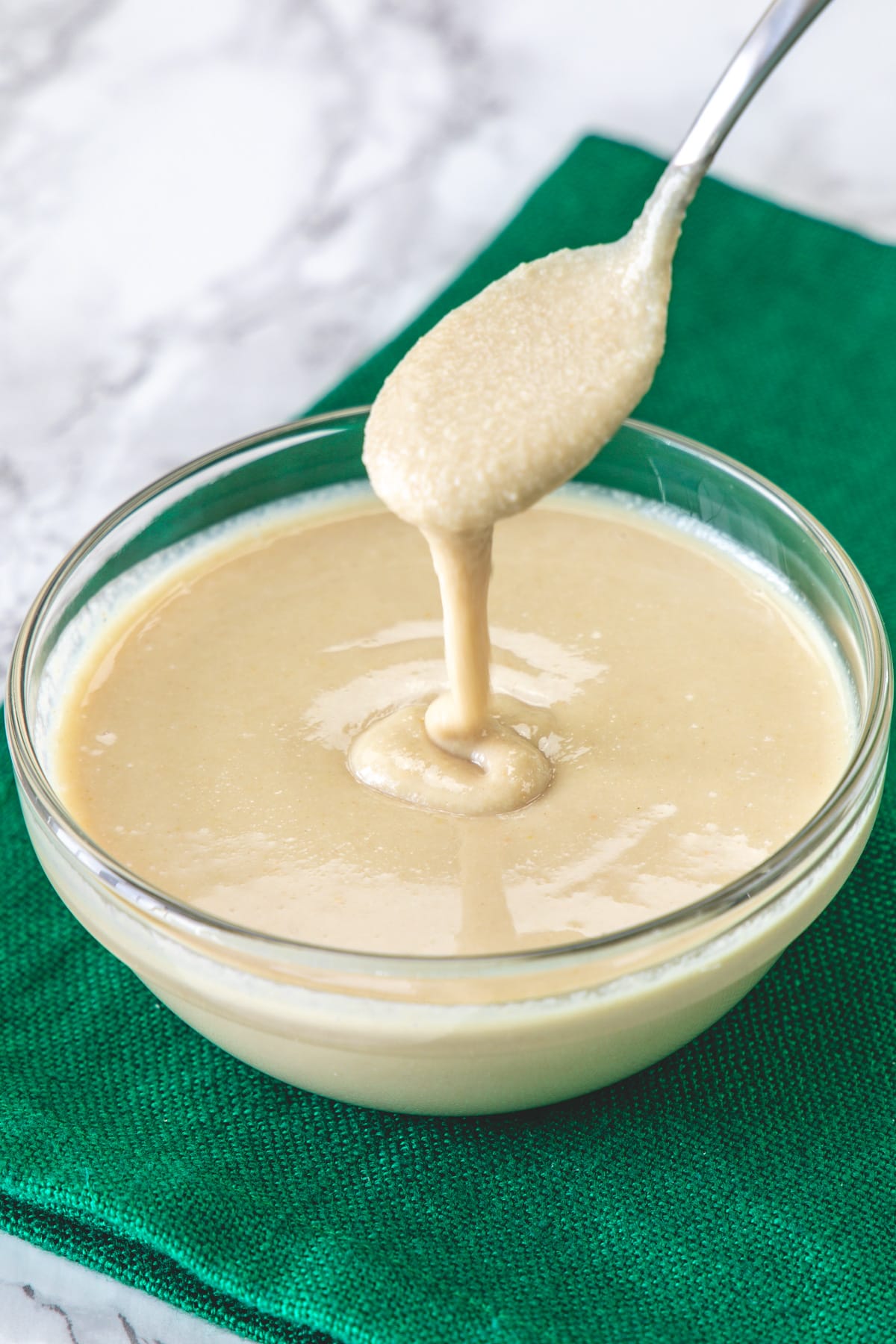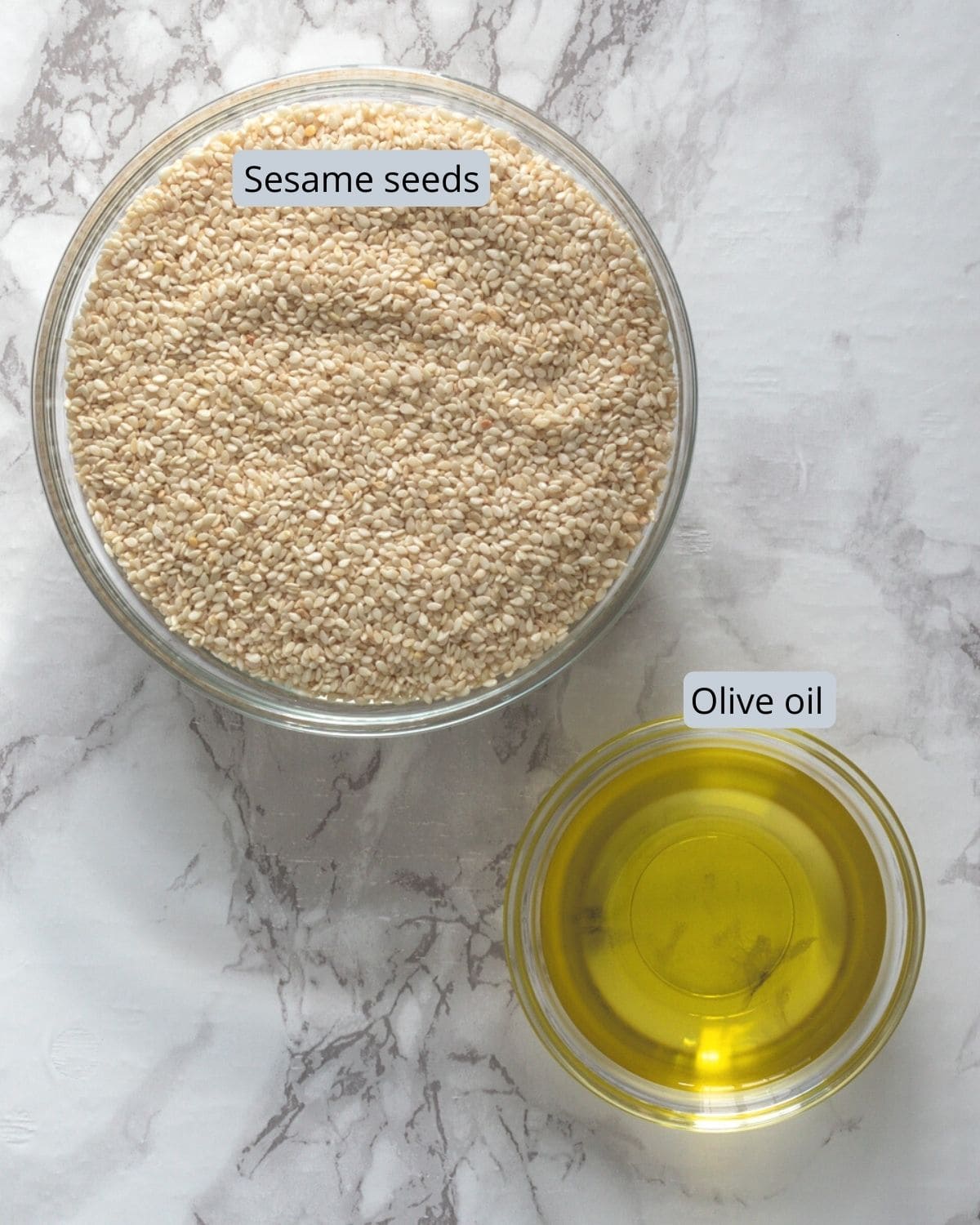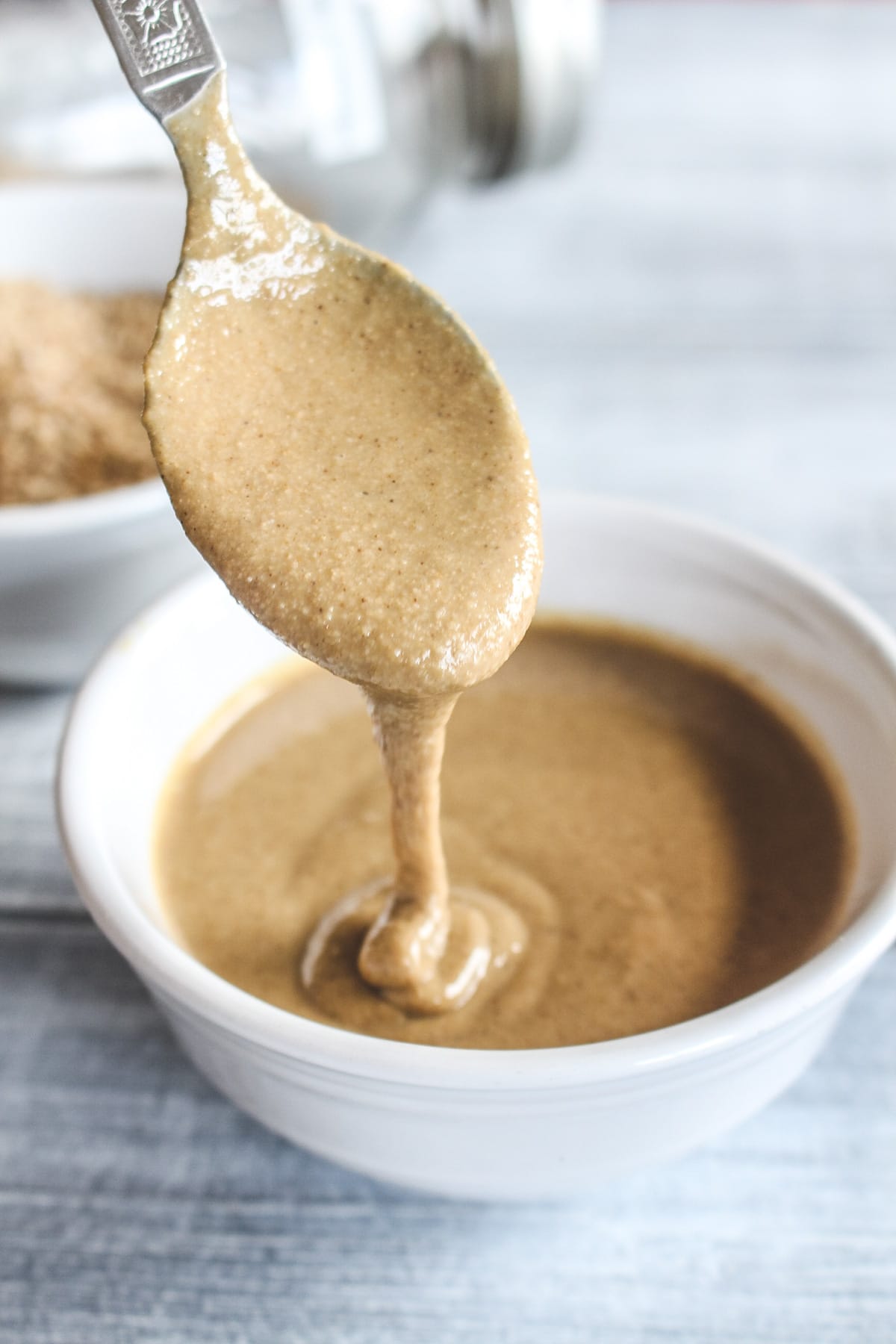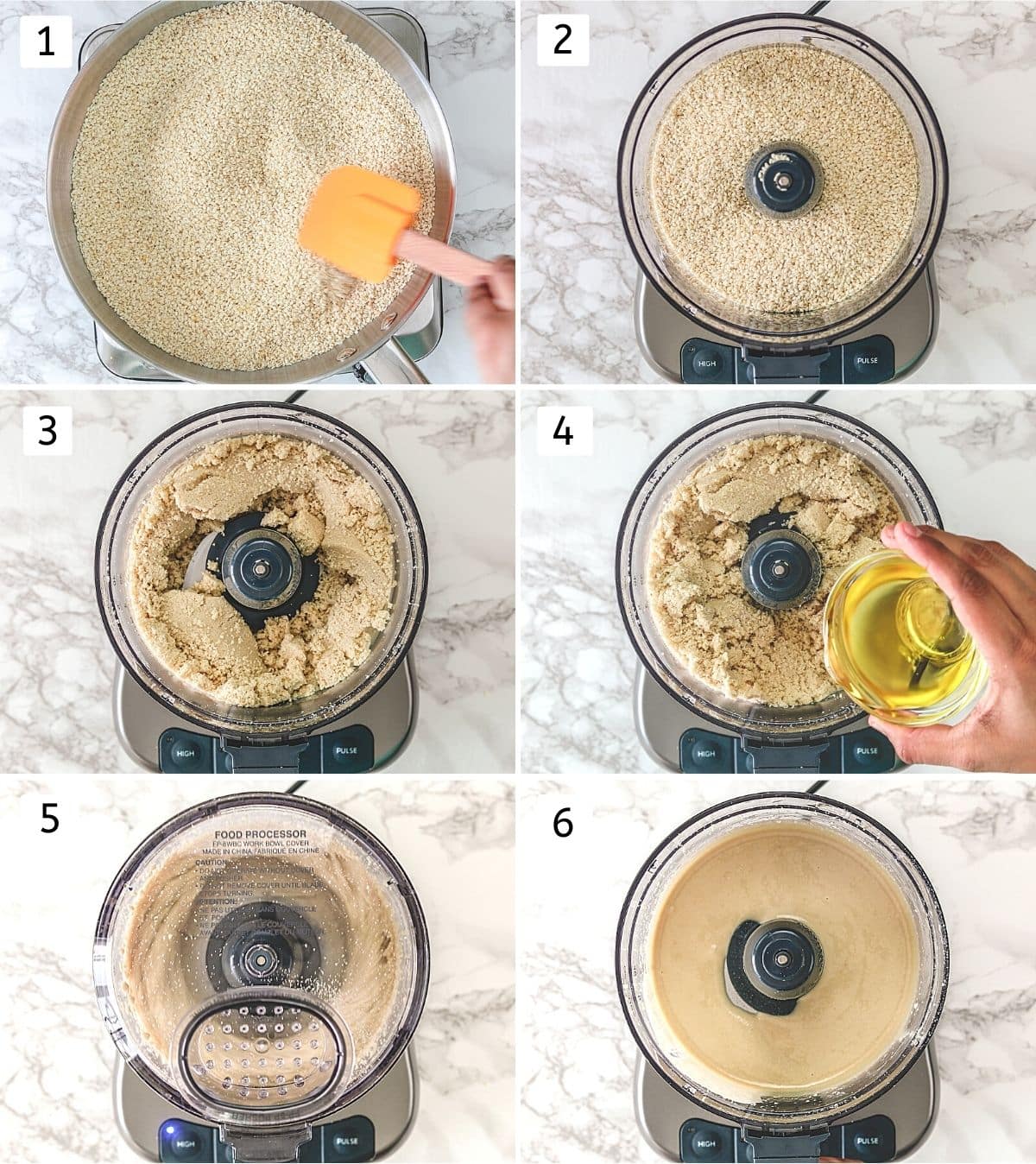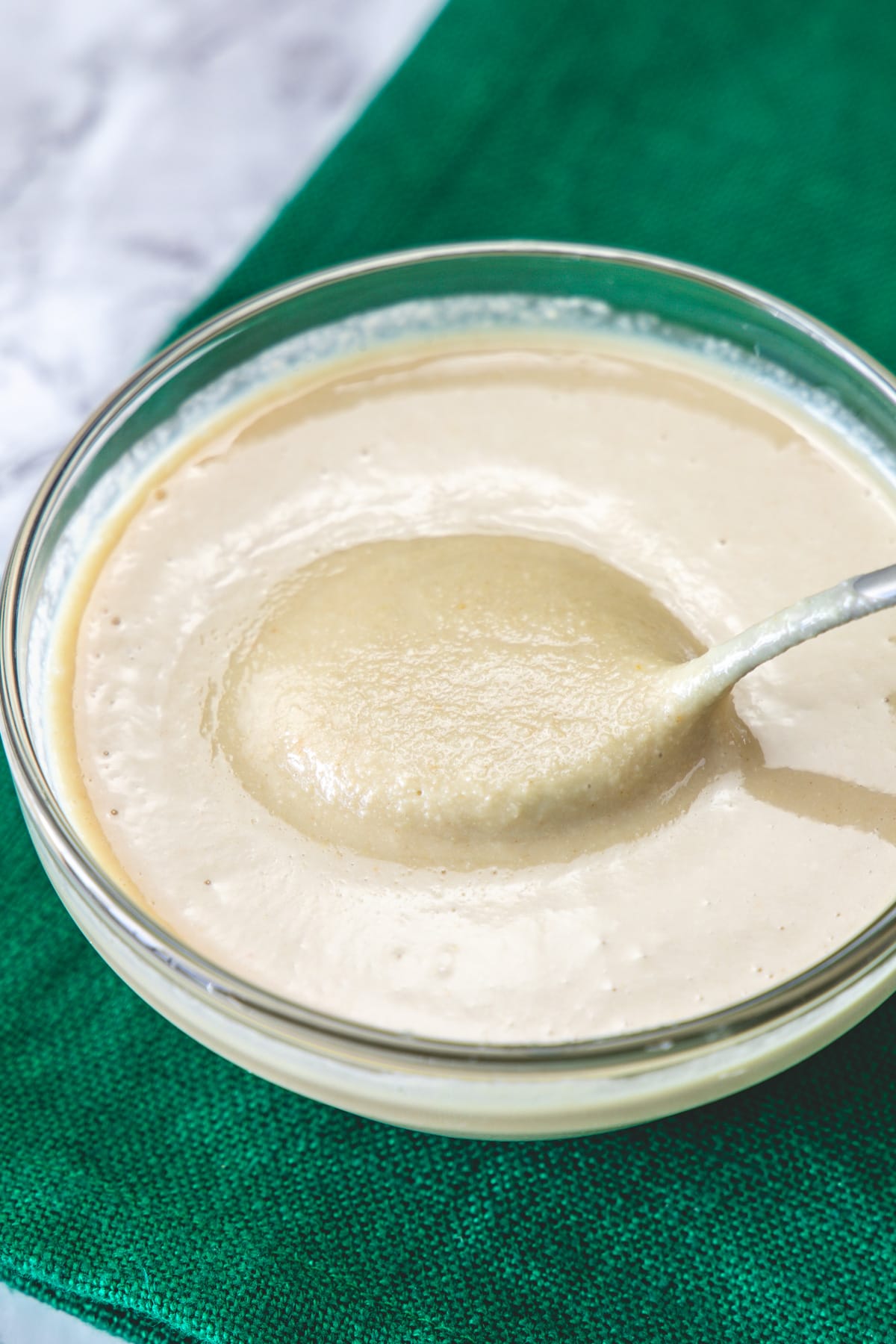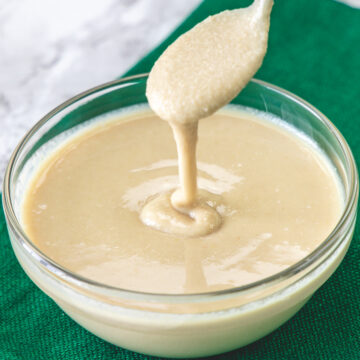This tahini paste can be stored in the fridge for several months without going rancid.
What is Tahini?
In simple words, tahini is a smooth paste made from hulled sesame seeds. It is a staple in middle eastern and Mediterranean cultures. Tahini is used in making many dishes like hummus, baba ganoush, dipping sauces (garlic tahini sauce), salad dressing, baking, etc. Taste: The nutty flavor is strong and earthy with a slight hint of bitterness. See the tips section below to avoid homemade tahini extra bitter. Texture: Smooth, creamy and loose like nut butter.
How Tahini Is Made?
Store-bought vs Homemade Tahini:
Homemade Tahini is
It is made from fresh sesame seeds. Slightly crushed sesame seeds are soaked in the water. So the sesame seed hull (husk/skin) is floating on the top and bran (meatier part of a sesame seed) settles down at the bottom of the water. Both are separated, bran is roasted and ground into a smooth paste to make tahini. Because fresh sesame seeds are used, the oil separated from the seeds itself is enough to make a smooth paste. No need to add any extra oil while grinding.
They use the same as the traditional method and tahini is made from sesame seeds only, no extra oil is used. Because they have special equipment so the oil is extracted from the sesame seed itself and it helps in the grinding process to make super smooth light-colored tahini paste.
At home, we use store-bought hulled sesame seeds which may/may not be fresh. Plus, we use a blender or food processor, unlike commercial machines. So after grinding sesame seeds at home, we get a clumpy, moist mixture. Then we add olive oil on top to help the grinding process to make tahini paste. Even after adding oil, homemade tahini is not super smooth like store-bought ones. But sure fresh tasting and cost-effective.
Cost-effective: If you buy the sesame seeds in bulk then yes it is cheaper than ready jar/bottles. Some grocery stores have bulk seeds available or buy online. If you go to an Indian grocery store often, I suggest buying from there. Don’t buy those small packets (that come in ounces portions), that will cost you more than a ready jar. Less processed: The store-bought tahini is processed to make it shelf-stable. Better tasting: Since it is not processed, it will taste fresh. Slightly grainy: yes, as per the method explained above homemade one is not super smooth even though we use a high-power blender or food processor.
🧾 Ingredient Notes
You’ll need only 2 ingredients to make tahini recipe at home. Plus, you’ll need a food processor or blender. Olive oil: It helps to make a smooth paste. You can use regular olive oil, extra virgin olive oil or avocado oil. Sesame seeds: Please use white sesame seeds (hulled). It gives the best-tasting tahini at home. Previously I have tried making tahini from unhulled sesame seeds because that’s what I always have in my pantry. I have noticed a few differences like tahini made from unhulled sesame is darker in color (see the pic below), more grainy (as the skin can’t be ground into smooth) and more bitter tasting.
👩🍳 How To Make Tahini At Home? (Stepwise Photos)
- Dry roast the sesame seeds on medium-low heat with stirring constantly. Roast until they are fragrant and stop as soon as it starts changing color or starts popping. Immediately remove it to a plate and let it cool down completely.
- Transfer the cooled, toasted sesame seeds into the food processor.
- Process until they are crumbly in texture.
- Add olive oil.
- Start processing again and do scrape the sides in between as needed.
- Process until it is smooth and runny in texture. It takes time, be patient and continue.
💭Expert Tips
Stir the sesame seeds constantly while roasting to avoid burning seeds and to roast them evenly.
Over roasted sesame seeds gives a bitter taste. Over roasted meaning, seeds get darker in color and oil starts to come out from the seeds. So lightly roast them and stop as soon as it starts changing color. A slight color change is fine. Use hulled white sesame seeds. Taste the seeds first, it should taste fresh and not rancid.
After adding oil, you need to stop the food processor occasionally to scrape the sides. A high-power blender or food processor is required to make smooth tahini paste.
🥣 How To Store Tahini?
Transfer it to an airtight glass container and store it in the refrigerator. In the fridge, it stays good for several months. You may need to stir it first before using it as oil may separate just like any other nut butter. Many online recipes say that it can be frozen. But I have never tried freezing.
🍽 How To Use Tahini?
Use in making side dishes like instant pot hummus, baba ganoush, etc. Use in making salad dressings. Make tahini sauce to dip your pita bread or veggies or drizzle over falafel salad bowl or falafel sandwich, wrap or shawarma. Use in baking recipes like brownies, cookies, etc.
Did you try this recipe? I’d love to hear about it! Click here to leave a review.
